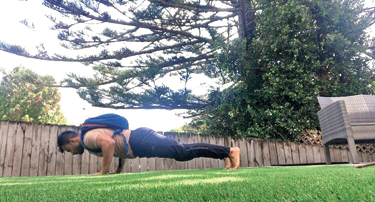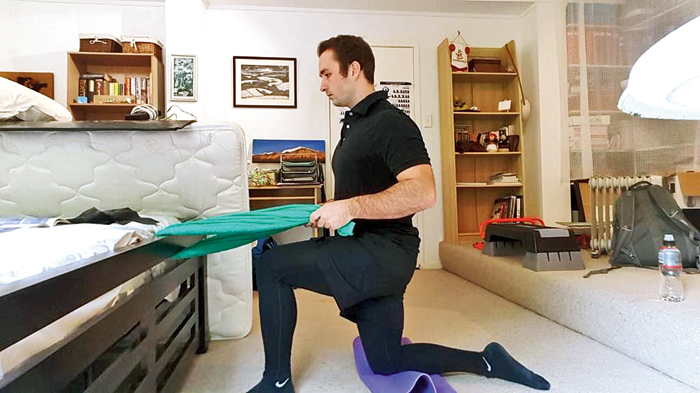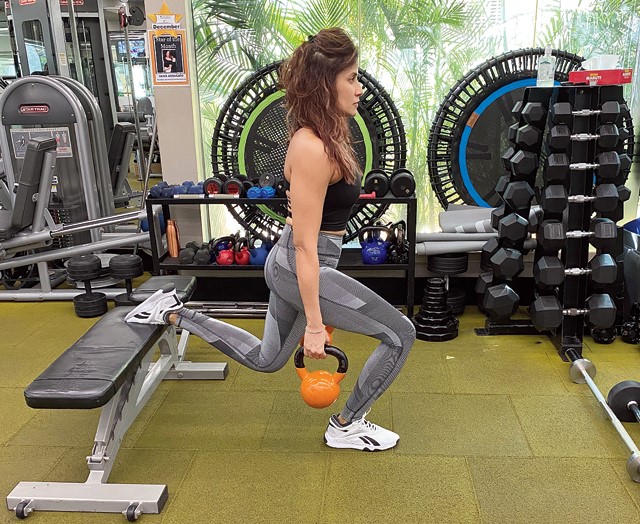Now that we have looked into the evidence behind the effect of exercise on the immune function in the previous weeks, let us find practical strategies to implement them into our daily lives. But before we get started with the practical strategies, it is important to acknowledge that several factors can influence physical activity at this time. Staying indoors at a stretch without any social interaction can be challenging not just physically but also psychologically. It is even more important to take care of our health during this time and most importantly connect with our loved ones often.
This article will focus on practical ways to incorporate exercises during this lockdown period. However, it is important to understand that no strategy can be bulletproof, what might be a good practice for an individual might not work for another person. So this article should be used as a guideline and care must be taken while doing the exercises mentioned in this article. Please consult an expert if you are not sure about any exercises or techniques mentioned in the article.
Exercise/Movement
Cardiorespiratory
The primary focus here should be to improve the heart and lung capacity. Many forms of training can be used depending on your accessibility, such as walking, running, cycling, swimming, dancing, callisthenics, yoga, playing semi-structured games indoors. Ideally, training should be divided into two types depending on the fitness levels and health condition of an individual:low-intensity high volume and high-intensity low volume.
Low-intensity high volume: The goal is to keep the intensity relatively low to perform the exercise for a longer duration — 30-45 minutes. For example, walking or running at a moderate speed. If you have a heart rate monitor you can keep a track (70-75 per cent heart rate reserve), if you do not have one then use the effort level as a measure, keeping the effort level between 6.5-8 (10 being highest). Alternatively, you can also use breathing as a gauge, if the breathing rate gets very rapid and you are not able to cope up without opening your mouth often to gasp air then lower the speed/intensity of the exercise. Besides, due to the prolonged duration, it is safer to pick an exercise that requires relatively lower skill level. For example, walking is relatively easier for most people, but vinyasa yoga can be more challenging.
High-intensity low volume: The primary goal of this form of training is to improve the efficiency of the heart and lungs to work at a faster rate. The overall work should be comparatively lower than the previous training method. For example, one minute of pedalling on a stationary bike as fast you possibly can or performing low-impact explosive exercises, such as skipping for one minute, followed by one or two minutes of rest for a total of 10-15 minutes. Rest and total volume would depend on the individual’s fitness level.
Care should be taken in picking the right exercises — joint sparring exercises should be included so that individuals can focus on the intensity of the exercises without the concern of injury. For most sedentary people with relatively lower fitness levels, climbing stairs rapidly (without hurting) and walking back down slowly can serve as high-intensity training. Intensity should be progressed gradually, intervals can be as short as 30 seconds to as high as two minutes depending on the fitness levels.
Pro tip: Alternate between the methods instead of doing the same method on consecutive days. Use the minimum effective dose strategy, that is, use the minimum intensity to start with and gradually increase over time.

Kaushik Talukdar is founder and CEO of Athlete Institute (www.athlete.institute) and a PhD scholar (Exercise and Sports Science). You can email him at kaushik@athlete.institute or tweet @coachkaushik
Peripheral (Resistance training)
The primary objectives of this type of training is to improve blood circulation to the working muscles, build bone density, improve neural drive, and increase muscular strength. With the current situation, resistance training can be challenging for most people due to access to equipment and gym. However, for a basic resistance training plan, one does not always need a gym. Here are a few ways to do that.
Slow eccentric: The goal of this type of training is to perform the eccentric (descending) part of the movement slowly. For example, while performing a bodyweight squat you are lowering your body very slowly (five to 10 seconds). This can be particularly challenging for the upper body as most people tend to be stronger through the lower body, therefore right progression is important. If you struggle to perform a full push-up, try it with the hands elevated on a table (stable enough), or perform them on your knees.
Overcoming isometrics: The goal of this is to hold the sticking point (hardest part of the movement) of a movement for a relatively longer duration (>3 seconds). For example, holding the bottom of a split squat for five to 10 seconds. This can be even more challenging than the previous method because holding the sticking point requires muscles to contract for longer duration. Therefore, pick easier exercises to start with. Exercises such as a wall sit can be useful for the lower body as the back gets support from the wall, therefore the tension is primarily on the legs as opposed to the back.
Explosive strength: The primary focus here is to perform the movements explosively. For example, performing a jump squat instead of a regular squat. The goal is to perform the movement explosively and then land softly without excessive pressure on the joints (knee and lower back). However, this type of training can be very demanding on the joints due to greater eccentric forces acting on the joints. Therefore, it should be avoided by people with existing injuries or people with limited resistance training background.
Pro tip: Alternating upper body with lower body movements can be useful (number of repetitions can be five to eight, sets two to five, depending on complexity and intensity. For example, if you do longer eccentric or isometrics (10 seconds) then reps and sets can be lower. Rest between sets would depend on individual fitness levels as long as you can maintain good technique throughout.
Putting it all together
Below is an example of a week plan, you can modify as you see fit but avoid high-intensity days back to back. You can also increase the frequency of a particular method if you specifically want to improve.
Monday: 45 minutes (walk/run/bike)
Tuesday: Eccentric resistance training
Wednesday: 15 minutes (high-intensity intervals on stationary bike)
Thursday: Overcoming isometrics
Friday: Rest (play with kids or family members)
Saturday: 30-45 minutes of dance or basic yoga (provided you already have done it before) or choose to walk or run
Sunday: Rest












